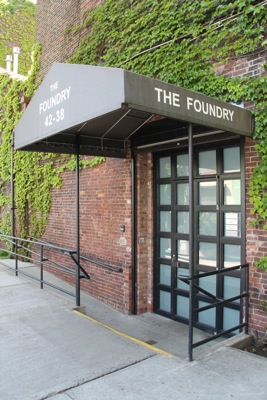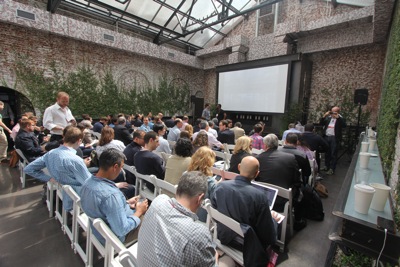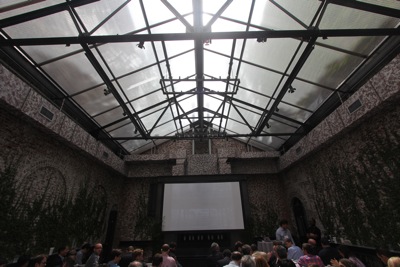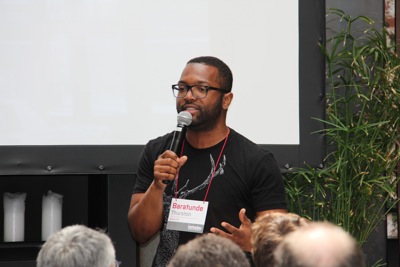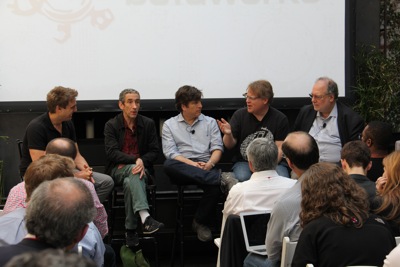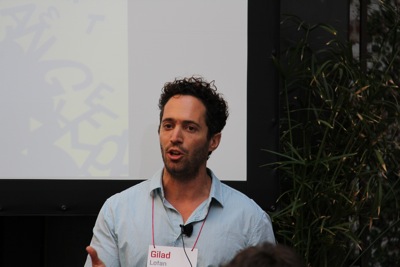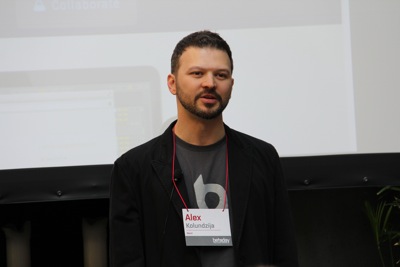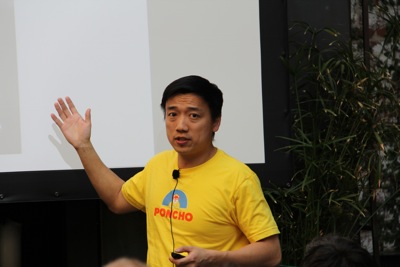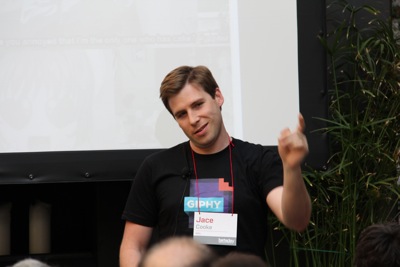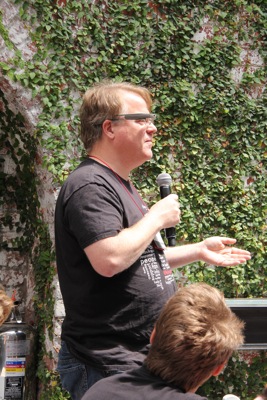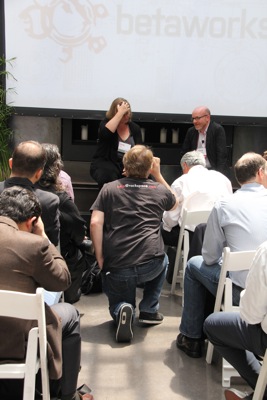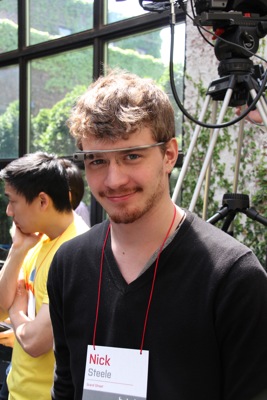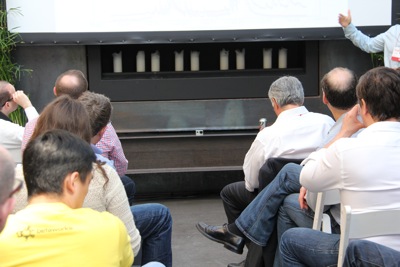A while back I was part of the short lived mentor program at YCombinator and wrote this post in response, Tips on Demo Day and Afterwards for YCombinator Startups. It was in reaction to easy to fix mistakes that all their crop make come the days before, during and after Demo Day.
Over the years after I wrote that post, I have mentored many startups, most recently at 500startups and ImagineK12. It seems that each startup, even at the beginning of the accelerator class, worries about their performance at Demo Day!
The previous post was more about the days closely surrounding Demo Day. However, I think there are more things to consider now that begins through the entire time in an accelerator program. To perform well at Demo Day, you should start thinking about Demo Day from Day One the moment you get there….
Day One to 1-2 Weeks Before Demo Day
In past accelerator classes, I always knew that there was friendly competition between the startups to give the best presentation possible on stage, over that of the others. However, startups sometimes don’t realize this at the outset.
It is important to know that intelligence gathering on your fellow startups in the class should begin as soon as possible. What should you look for?
1. Who has the most traction and revenue. These will be ones that investors will keep their eye on the most.
2. Who has the coolest product, regardless of traction. These will be stars of the show from an “ooh-aah” standpoint. They will be memorable simply for their coolness.
3. Who has raised a round already. Somehow they wooed investors and may not need Demo Day to do so, or they may be announcing a bigger round then. But it is impressive when someone can get up on stage and say “we’ve already raised our round”.
These will be your biggest competition on stage come Demo Day. You should watch out for these startups and figure out the best way to top them on stage. Rank them all from 1 to X and see where you stand in that list. The ones ahead of you are the ones you need to top – you only have from the beginning of the program to the end so work fast and smart!
Having said the above, and while I think they are your competition for Demo Day results, I also do believe that you will all more likely succeed if you all support each other and work together. So save your high priced service for those outside the accelerator; give your fellow startups a break so that you can all get the best chance to execute well by Demo Day. Support each other through the highs and lows; give advice freely and don’t undermine anyone.
What are the categories to excel at? The basic categories are:
1. Traction, exponentially rising metrics
2. Revenue
3. Product awesomeness
4. Technology – unique? awesome? defensible?
4. Design excellence
5. Customer acquisition strategy, marketing excellence
6. Market size is huge
7. Founders are awesome
8. Previously committed investors, especially well known ones – social proof in action
9. Vision
In general, you should maximize your showing in as many categories as possible, and then better than anyone else in the class. (A good read: Brian Witlin’s 10 Topics To Know Cold for Your Perfect VC Investor Pitch).
At one accelerator, a few startups told me that some had given them some basic numbers in traction and revenue they should hit in order to give them the best chance at getting investment. To me, if this is what someone told you, then you should treat this as the average and fight/execute to exceed these metrics! Everyone else may be attempting to hit this average, but you should try to go beyond it to look better!
Up to 1-2 Weeks Before Demo Day
OK so you’ve spent the last few weeks or months working your butt off to try to be the best of the class. If you’re executing strongly, then you’re off to the races.
But if you’ve tried your best and you’re still lagging, what do you do? DON’T DESPAIR. Work on things that are under your control, like product awesomeness, design and technology excellence, market size is huge, and vision.
While the more traditional way of getting funded is excelling at those previously mentioned categories, I’ve seen startups get funding on much less progress so hope is not all lost. The idea is to NEVER GIVE UP (essential quality of any great entrepreneur).
Peacocking
If you’ve read The Game by Neil Strauss, you’ll know that “peacocking” is what you do if you walk into a bar and try to pick up women. You need to look bigger/better/different/more flamboyant/more whatever than everyone else in there. In doing so, pickup artists have learned that they can pick up anyone!
I believe Demo Day has become about peacocking not for women, but for investors. Demo Day itself has become the pickup bar for startups. It’s full of investors and you want to get their attention. Otherwise, someone else is going to get the attention and you’ll be left at the bar alone with your drink. That sucks! Don’t be that guy and see someone else walk off with the hottest investors in the place!
How might you peacock?
It may be as simple as all of you wearing brightly colored T-shirts, or some gimmick like a sweepstakes, or give away some cool gift (like T-shirts; one startup made Dr. Dre clone headphones to give away to investors who talked to them!).
It may be something amazing in your pitch. This something could be one of the typical previously mentioned categories, or something else entirely different. One startup I know put up a demo so amazing on stage that he generated a murmur of “ooohs” and “aaahs” through the audience, which resulted in a whole bunch of people coming up to him later asking him how he did that!
The Beauty Pageant
Another way to look at Demo Day, since it’s on stage, is that it’s a beauty pageant. All of you are clamoring to be Miss Universe so you better have a great showing across all categories. You’re all competing, trying to look the best against the other contestants. Actual awesome performance in the previously mentioned categories helps a great deal and may be enough; peacocking adds icing on the cake (especially if there is, unfortunately, little cake, if you get my meaning).
The big prize is your two goals – the first is to get investors to come up and talk to you. The close second is to get them to invest in you. But you can’t get the second without the first happening!
Keep that in mind as you’re prepping for your stage debut. Whether it’s through actual excellence in execution, or peacocking, or some awesome demo, or other thing, your overwhelming goal is to get investors to walk to you. You don’t want to be standing around waiting for people to come up to you; find a way to make them all want to talk to you – be Miss Universe with the biggest/brightest feathers!
1-2 Weeks Before Demo Day
Prep as in my post Tips on Demo Day and Afterwards for YCombinator Startups. Make business cards and T-shirts, etc. Get the list of investor attendees and research potential investors who are your number one targets.
Practice your pitch OVER and OVER again until you are reciting it in your sleep and can do it without slides or help. Deliver it live multiple times to friends, mentors, and others until it is fine tuned to nth degree.
At 500startups, there are big blocks of hours dedicated each day and evening to let startups pitch practice. We mentors and others sit in on this pitch prep and give feedback. You should go to each one, get feedback, edit the pitch and then go back to the next session to pitch again and again and again until it is perfect.
Note that it can be a frustrating experience getting pitch feedback from different individuals because each person may tell you completely different things to change. Just gather it all, make changes that work for you, and make it flow the way you want to deliver it – remember that you’re the one pitching and you’ll have a particular style or personality, so you should make it your own. Try our suggestions; see if some fit and if they don’t, toss them. It just needs to be cohesive and flow coherently and there are a thousand ways that can happen. We’re here to help you with our feedback (and maybe confuse you), but YOU own this pitch, not us.
Also, remember that sometimes there is more than one Demo Day depending on the accelerator. If you have more than one pitch to give, think of it as a performance where you have to perform the exact same show every night. That means you’ll need to have perfected the emphasis, the jokes, the words, the dramatic pauses and deliver it exactly the same way each time.
Demo Day
The day of the beauty pageant is here. Enjoy the day, relax, and deliver the pitch in the best way possible. Then get out in the crowd and network (peacock) like crazy! Read my previous post for tips on the day of Demo Day.
After Demo Day
It ain’t over! Now comes the follow ups and communications to get investors on board. Get organized and track your progress. Set up meetings with investors. Read my previous post for tips on post-Demo Day.
Being in an accelerator class is one of the best things you can do to help you make progress and get funding. Make the most of your time, optimize it from day one to Demo Day.
